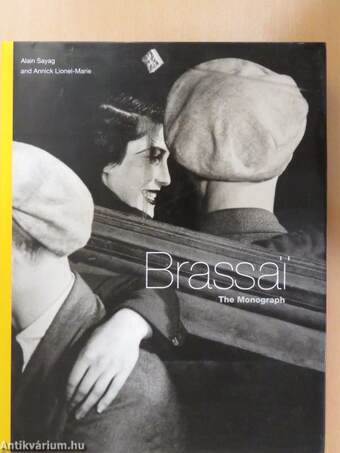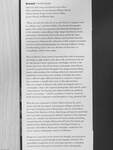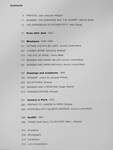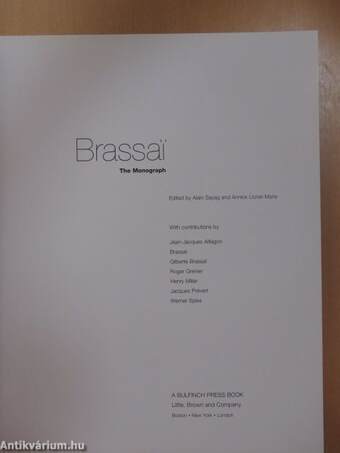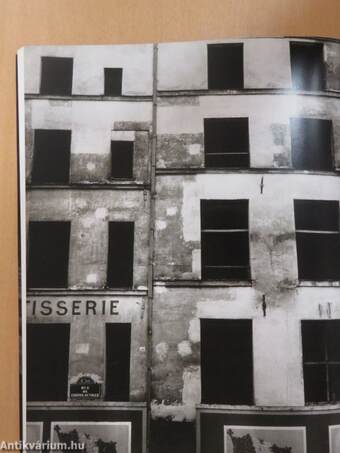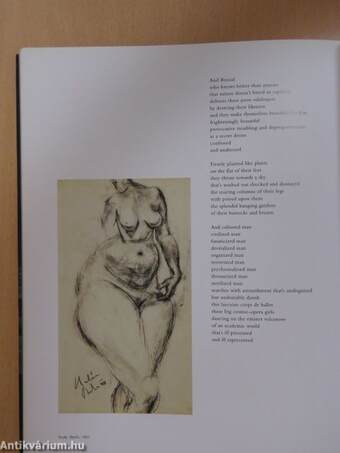1.066.445
kiadvánnyal nyújtjuk Magyarország legnagyobb antikvár könyv-kínálatát

VISSZA
A TETEJÉRE
JAVASLATOKÉszre-
vételek
Brassai
The Monograph
| Kiadó: | Bulfinch Press Book |
|---|---|
| Kiadás helye: | Boston |
| Kiadás éve: | |
| Kötés típusa: | Vászon |
| Oldalszám: | 319 oldal |
| Sorozatcím: | |
| Kötetszám: | |
| Nyelv: | Angol |
| Méret: | 31 cm x 25 cm |
| ISBN: | 0-8212-2668-1 |
| Megjegyzés: | Fekete-fehér fotókkal, reprodukciókkal. |
naponta értesítjük a beérkező friss
kiadványokról
naponta értesítjük a beérkező friss
kiadványokról
Fülszöveg
Brassai The Monograph
Edited by Alain Sayag and Annick Lionel-Marie
With contributions by Jean-Jacques AiHagon, Brassai,
Gilberte Brassai, Roger Grenier, Henry Miller,
Jacques Prévert, and Werner Spies
"When you meet the man you see at once that he is equipped with
no ordinary eyes," said Henry Miller of his friend's photographic
genius. One of the most important and influential photographers
of the twentieth century, Brassai (1899-1984) is best known for his
chronicling of demimonde Paris in the 1930s and for his classic
portraits of such artists as Picasso, Matisse, and numerous Surrealist
contemporaries. However, the enthusiasms of this complex personality
extended well beyond photography, into drawing, sculpture, writing,
and filmmaking, and it is this very diversity of talent that is so
compellingly evoked in these pages.
Here are Brassai's iconic scenes of nocturnal Paris with its prostitutes
and thugs, its night workers, cafés, dance halls, and theaters;... Tovább
Fülszöveg
Brassai The Monograph
Edited by Alain Sayag and Annick Lionel-Marie
With contributions by Jean-Jacques AiHagon, Brassai,
Gilberte Brassai, Roger Grenier, Henry Miller,
Jacques Prévert, and Werner Spies
"When you meet the man you see at once that he is equipped with
no ordinary eyes," said Henry Miller of his friend's photographic
genius. One of the most important and influential photographers
of the twentieth century, Brassai (1899-1984) is best known for his
chronicling of demimonde Paris in the 1930s and for his classic
portraits of such artists as Picasso, Matisse, and numerous Surrealist
contemporaries. However, the enthusiasms of this complex personality
extended well beyond photography, into drawing, sculpture, writing,
and filmmaking, and it is this very diversity of talent that is so
compellingly evoked in these pages.
Here are Brassai's iconic scenes of nocturnal Paris with its prostitutes
and thugs, its night workers, cafés, dance halls, and theaters; here are
the fog-shrouded streets, monuments, and bridges; and here is the
literary and artistic elite of the Parisian avant-garde, whom Brassai
counted among his friends. Alongside these images, and providing a
deeper understanding of his working method, are many previously
unpublished contact prints and variations of familiar shots taken
from a different angle, differently framed, or as part of a sequence
that constitutes a veritable short story on film. Beyond these,
there are examples of Brassai s nude studies and magnifications of
commonplace objects, the engraved photographic plates that he called
"transmutations," his drawings and sculpted pebbles, the graffiti he
found so fascinating — indeed, everything to which he turned his
fertile and always imaginative mind throughout a long, productive life.
With the close cooperation of Mme. Gilberte Brassai, the artist's
widow, and with the support of Jean-Jacques Aillagon, president of
the Centre Pompidou, and of Werner Spies, director of the Musée
National d'Art Moderne in Paris, Alain Sayag and Annick Lionel-Marie
have succeeded in producing the definitive summary of this important
ouvre. As a valuable extra dimension, the book includes penetrating
excerpts from the writings of Brassai himself and of his friends and
admirers Henry Miller, Jacques Prévert, and Roger Grenier; an
interview with Gilberte Brassai and a biography compiled by her;
and an extensive bibliography and list of exhibitions.
Brassai was a man who saw his private life, thoughts, and motivations
as elements best revealed through his photographs and books.This
unparalleled compilation of text and images provides a compelling
account of one of the greats of twentieth-century photography. Vissza
Témakörök
- Idegennyelv > Idegennyelvű könyvek > Angol > Művészetek > Fotóművészet
- Művészetek > Fotóművészet > Életrajzok > Külföldi
- Művészetek > Fotóművészet > Albumok > Külföldi
- Művészetek > Fotóművészet > Idegen nyelv > Angol
- Művészetek > Fotóművészet > Története > Külföldi
- Művészetek > Fotóművészet > Összefoglalók, tanulmányok > Külföldi
- Életrajz > Művészet > Egyéb
- Idegennyelv > Idegennyelvű könyvek > Angol > Életrajz > Művészet > Egyéb
Megvásárolható példányok
Nincs megvásárolható példány
A könyv összes megrendelhető példánya elfogyott. Ha kívánja, előjegyezheti a könyvet, és amint a könyv egy újabb példánya elérhető lesz, értesítjük.



